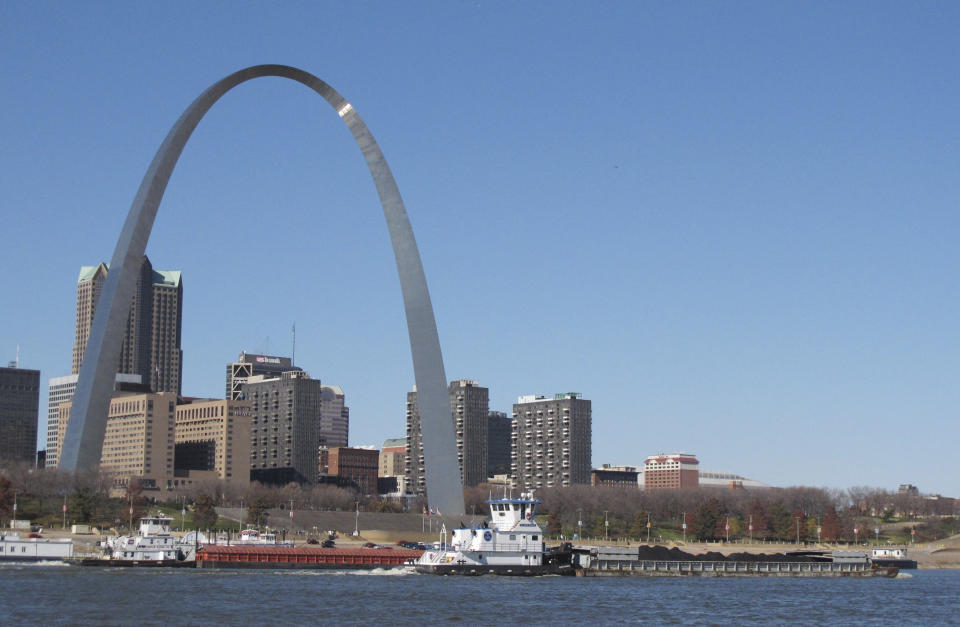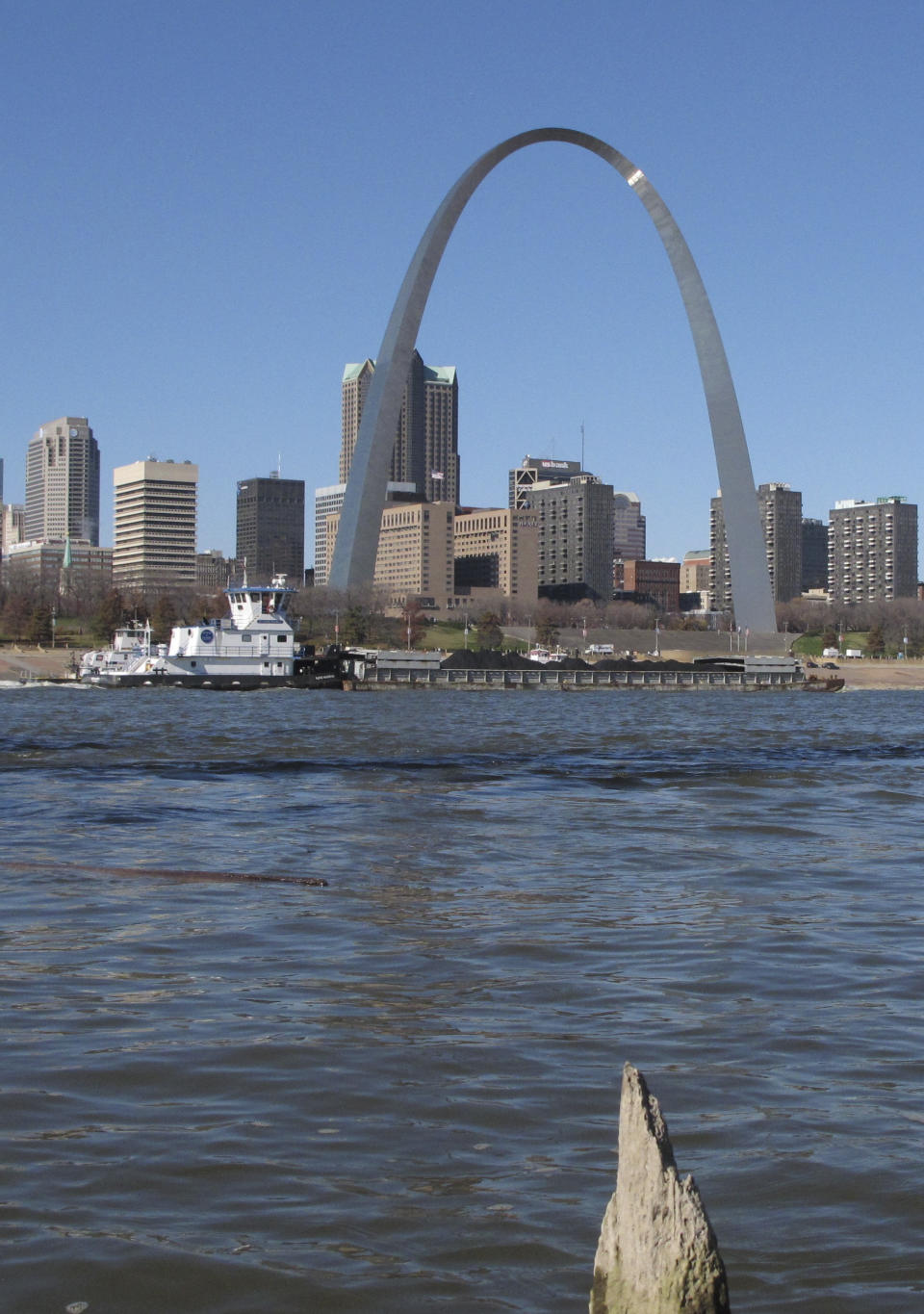APNewsBreak: Corps plans Missouri River reduction
ST. LOUIS (AP) — The Army Corps of Engineers will proceed with plans to reduce the flow from an upper Missouri River reservoir despite concerns that it will worsen low-water problems on the Mississippi River, officials told The Associated Press Tuesday.
The corps expects to cut the flow from the Gavins Point Dam in South Dakota to 12,000 cubic feet per second from 17,000 cubic feet per second starting around Nov. 23 as a drought-related conservation measure.
Missouri Gov. Jay Nixon and a barge industry trade group in recent days have implored the corps to reconsider. The Missouri flows into the Mississippi north of St. Louis. Less water from the Missouri would lower the pool of the Mississippi between St. Louis and Cairo, Ill., potentially halting barge traffic. Nixon said that could create an "economic disaster" for farming, fuel and other interests that use the river to ship goods.
Corps officials told the AP about their plans three days ahead of a scheduled new conference in St. Louis. They said efforts such as dredging, river structures and rock removal aim to keep the Mississippi open for as long as possible.
Corps spokeswoman Monique Farmer said the agency is obligated by Congress and the courts to act in the best interest of the Missouri River basin, an obligation spelled out in the Missouri River Master Manual.
"We do not believe we have the authority to operate solely for the Mississippi River basin," Farmer, of the corps' office in Omaha, Neb., said. "There are incidental benefits for the Mississippi River. The manual is for benefit of the Missouri River."
A message seeking comment from Nixon's office was not returned.
The Democratic governor wrote a letter Friday to Jo-Ellen Darcy, the Army's assistant secretary, urging the corps "to avert potential economic disaster on this vital avenue American farmers use to get their goods into the world market."
Meanwhile, the American Waterways Operators and Waterways Council last week urged Congress and President Barack Obama to act on behalf of river interests. Tom Allegretti, the trade group's president and CEO, said barges carry 20 percent of the country's coal and more than 60 percent of its grain exports. Other cargo such as petroleum products, lumber, sand, industrial chemicals and fertilizer also gets shipped by river.
The corps typically reduces flow from the upper Missouri River reservoirs this time of year, in part out of concerns that the heavier flow could create dangerous ice formations during the winter. But severe drought this year has led to severely low water levels on many rivers, including the Mississippi.
Mike Petersen of the corps' office in St. Louis said efforts have been under way for months to fight back against the drought. Dredging operations that normally begin in August started in July, with work going on around the clock to remove sediment from the river bottom.
The corps also plans to use explosives to blast away treacherous rock formations at the bottom of the river near two southern Illinois towns, Thebes and Grand Tower. If the river level gets too low, those formations could bring barge traffic to a standstill.
The project has passed environmental approval, but contracts must still be awarded. Work is expected to begin in early February.
But Petersen conceded the river could be closed if the drought persists. He said closure at St. Louis would become more likely if the river gauge gets to around minus-5 feet. It was at minus-1.2 feet Tuesday morning.
"The middle Mississippi is a tricky spot because we're depending on the upper Mississippi and the Missouri and what they give us," Petersen said. "For us, the reduced flow from the Missouri is a fact of life in how we operate the river."
Farmer said the corps must tend to eight congressionally authorized purposes on the Missouri River: hydropower, water supply, water quality control, fish and wildlife, recreation, irrigation, navigation and flood control.
Because of the drought, the Mississippi has received as much as 78 percent of its water from the Missouri this year, compared with 60 percent in a normal year, according to Nixon's office.



